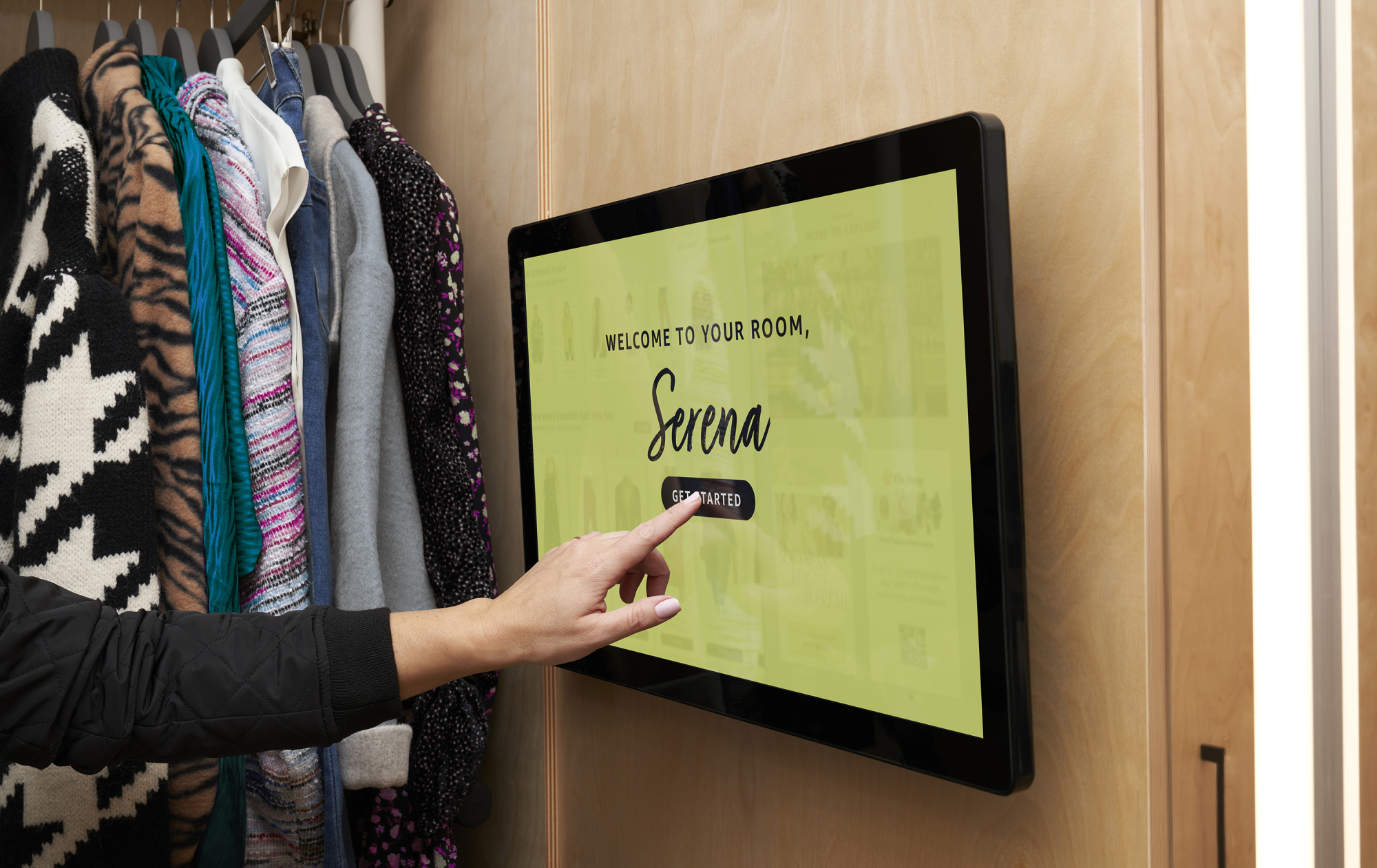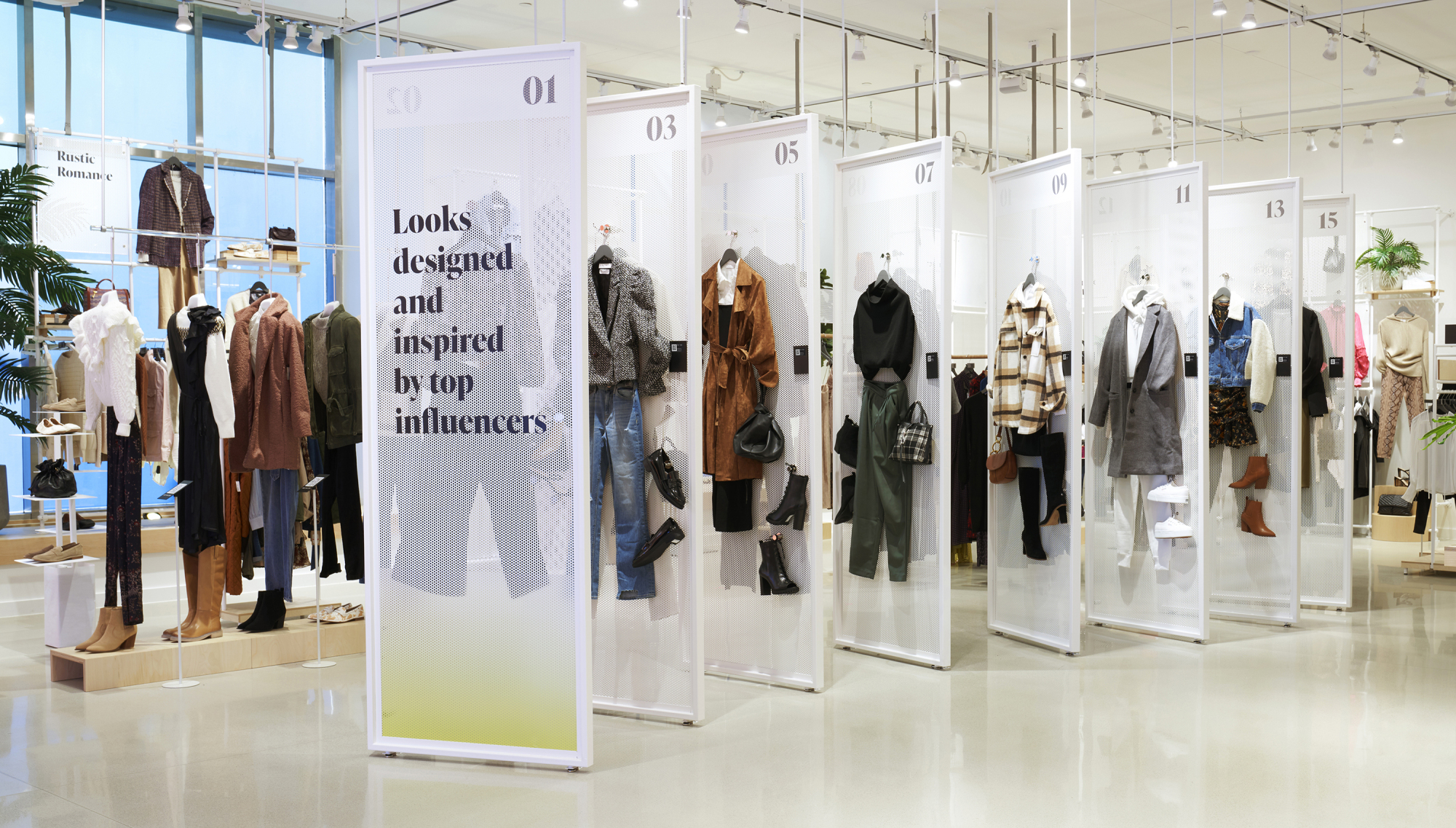From the bitchy shop girls in Pretty Woman to the bitchy shop girls in Legally Blonde, the retail workers tasked with helping you shop for clothes get a bad rap. But even Elle Woods — who knows the value of talking someone out of a truly heinous angora sweater — might not be stoked about Amazon’s latest retail concept that minimizes the role of human shopping associates in a big way.
On Friday, Amazon announced that it is opening a new brick-and-mortar clothing store in the L.A. area called Amazon Style. The concept is basically that it combines physical shopping with an app-based experience.
The first Amazon Style will be a 30,000 square foot space at the Americana at Brand shopping center — An outdoor mall that embodies capitalist hell so much that it has inspired a meme account with the same name. Amazon is actually already an Americana tenant with its Amazon 4-Star store, so Jeff Bezos is apparently doubling down on his mall real estate footprint with Amazon Style.
When you enter the store, you’ll open the Amazon Shopping app. The store floor will only have samples of the clothes that are available, so if you see something you like, you scan the item’s QR code. This will let you select the size or other details on your phone, and send the item to a dressing room where all the clothes you’ve picked out will be waiting for you.
This theoretically solves a couple problems. The first is having to rummage through a clothing rack to find (or not find) your size. It also eliminates the slightly annoying experience of walking around a store and loading up your arms with clothes to try on.
When you get to the dressing rooms, you’ll enter the queue on your phone, and a room will be prepared for you. Inside, a screen will welcome you by name. This is sort of the digital equivalent of when hippy-chic Anthropologie employees would write your name in chalk on your dressing room door, so that associates could attend to you by name — which certainly makes me feel oh-so-special.
 Amazon robots are here to help.
Amazon robots are here to help.Credit: Amazon, Inc.
You’ll also be able to continue to shop for clothes on that screen, and request other sizes. This could take some of the awkwardness out of shopping, when you have to wait for someone to come around to get you a bigger or smaller size.
One corporate director described the fitting room experience to Reuters as a “magic closet.” But it isn’t magic, really — your clothes appear thanks to the back-of-house Amazon workers who will likely see what you’ve ordered, get those items from the store’s warehouse space, and deliver them to dressing rooms. A truly “magical” process! If you don’t think about the human laborer behind it all.
This is, of course, what Amazon does best: Using invisible human labor to power shopping experiences designed to make spending your money as easy as possible. Those human interactions with shop workers that can either be helpful or uncomfortably pushy? Unnecessary. The expertise of a human recommendation? Imprecise, expendable. Amazon Style essentially Amazon-ifies in-person shopping by making it recommendation-based and only using human labor for the jobs it hasn’t figured out how to get a robot to do, yet.
Amazon of course says retail workers will be a big part of the Amazon Style shopping experience, and notes that “hundreds” of employees will work at the store. So while humans may not be the go-to source for clothing recommendations, Amazon assures us that they’ll still be super important.
“Amazon Style’s personalized shopping experience would not be possible without our employees who are dedicated to helping customers find looks they love and feel great in,” an Amazon representative said over email. “The store will employ hundreds of employees to provide customer service, deliver items to fitting room closets, merchandise the store to inspire discovery, help customers at checkout, manage back-of-house operations, and much more.”
 Robot, get me that lewk, stat!
Robot, get me that lewk, stat!Credit: Amazon, Inc.
It might be unfair to view this app-centric experience as a loss of the human retail touch that can help you find items you like, and more than that, perhaps even constitute an actual human connection that leaves both parties feeling fulfilled. That’s because instead of the more hands-on experience you get at a high-end department store like Nordstrom, going to Amazon Style might be more akin to going to an Old Navy or another big box store. Associates at places like those are usually stretched too thin, in too chaotic of an environment, with paychecks that compensate them too little, to provide that hands-on experience. It’s no wonder those sorts of jobs are so hard to fill these days — and why Amazon might be giving those tasks to robots, not humans. Perhaps Amazon Style can give people who usually wouldn’t get that personalized shopping experience some of that same feeling of being treated and seen.
But the move to replace or at least supplement retail associates with algorithmic recommendation, and reduce the amount of human interaction in brick-and mortar shopping, is a bit sad. Maybe the glamor of the shop girl job has long since waned. But I’m not sure an app telling me I’d look great in this top would give me the confidence boost that’s all part of the fun of in-person shopping. But I guess that’s expendable, too.